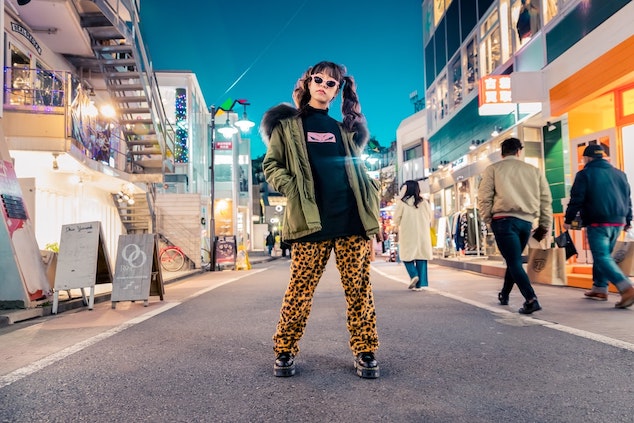
Rise of Japanese Streetwear: How Non Conformism and the contribution of Counter Culture as seen in the streets of Urahara gave rise to a new fashion forward look.
Japanese streetwear has been recognized as the most iconic fashion-forward movement that’s mesmerized the entire world. The recognizable Urahara style, kawaii clothing, schoolgirl apparel – they’ve influenced trends across the globe. And while they appear ultra-modern at first glance, these styles are heavily rooted in history and tradition.
Looking closely, you can see just how much cultural clothing items like haori, kimono, and yukata have impacted the overall aesthetic of today’s Japanese streetwear. So, if you want to learn more about the most fashionable streetwear trends in Japan, it’s critical to look back at the country’s history. After all, fashion and culture have always been very much intertwined, making it impossible to separate the two concepts.
With this in mind, let’s take a look at how Japanese streetwear started and which traditional elements still make their presence known.
The Roots of Japanese Streetwear
What we recognize as Japanese streetwear today had its roots in the early 1980’s/1990’s in no other city than Tokyo. Around this time, clothing became a meaningful way to express yourself in virtually every country in the world. Trend-setters drew inspiration from sports, music, movies and developed unique fashion styles that spoke to their personal values and interests.
However, what makes this focus on self-expression so unique in Japan is that it was an effective way for the youth to stand up to their elders. Keep in mind that Japan is a rigorous and highly traditional society where the elders are deeply respected, so standing up to them is a huge step.
In the last two decades of the 20th century, we see the counterculture (where the focus is placed on the youth instead of on the elders) in Japan take off. Young Japanese adults are moving away from tradition and paving their paths. This defiance and non-conformity are still at the very heart of Japanese streetwear today.
Urahara
As Japanese youth started breaking away from tradition, they also started moving away from family homes and contributing to culture and fashion. Waves of young adults flooded the Urahara (or ura-Harajuku/ hidden Harajuku) – a small neighborhood between Harajuku and Aoyama – and commenced on a creative journey that takes us to today’s Japanese streetwear.
The streets of Urahara started filling up with small, unnamed boutiques that each had a unique style and flavor, representing the youthful defiance of Japanese men and women. In the ‘90s, we started seeing the western influence on Japanese streetwear and a rising interest in hip-hop and punk styles.
However, what distinguishes Japanese streetwear and style from the US or UK is that many Japanese designers became inspired by the regular, everyday people instead of prominent celebrities. And that’s what grabbed the attention of the public.
Soon, the Harajuku fashion scene saw the opening of stores such as NOWHERE, and the Japanese fashionistas started giving rise to authentic subcultures and styles, including:
- Kawaii
- Olive girl
- Minimalistic
- Vintage and remake
- Schoolgirl aesthetic
Urahara and Harajuku streetwear are simultaneously fashion-forward and traditional, so let’s take a look at some of the more obvious traditional elements.
Traditional Elements in Japanese Streetwear
Although Japanese streetwear looks nothing like traditional kimonos and yukatas on the surface, many of the most popular trends were inspired precisely by such traditional apparel.
Layering
Regardless of the season and whether it’s the hottest day of summer or the coldest day of winter, and irrespective of the specific fashion subculture, the most significant trend you’ll notice on the streets of Tokyo is layering.
A sundress cannot but go over a T-shirt and under a light jacket. A winter coat isn’t enough by itself – you’ll see it layered on top of blouses, shirts, and at times even under another jacket.
While layering certainly isn’t a uniquely Japanese trend, when you see it on the streets of Tokyo, know that it was inspired by traditional kimonos and yukatas, famous for their extensive layers.
Kimono aesthetics
Although kimono isn’t a part of everyday apparel in Japan today, only worn on special occasions like weddings or during the Gion Matsuri festival, kimono aesthetics are very much present in today’s streetwear.
We see it in layering and in modern prints and patterns – colorful jackets with Sakura print, light, silky coats with the distinct kimono-like collar, thick waist wraps on coats, and more. These are just some examples of how impactful kimono was (and still is!) on Japanese streetwear.
Baggy clothing
Another trend inspired by tradition and culture is baggy clothing. Japan is known for its extreme modesty – in speech, body language, behavior, even clothing. Traditional, modest, conservative clothes are very much in fashion in Tokyo. The biggest fashionistas and Japanese streetwear representatives will often wear layers upon layers of baggy clothes that aren’t revealing or form-fitting in the slightest.
Final Thoughts
Japanese streetwear is a unique mixture of tradition and modernism. You’ll see no similar styles and fashions anywhere in the world but Tokyo, even though many international designers try to imitate it. That’s because the key to Japanese streetwear isn’t simply in the clothes themselves but in the mindset that the designers have, and that cannot be copied.





